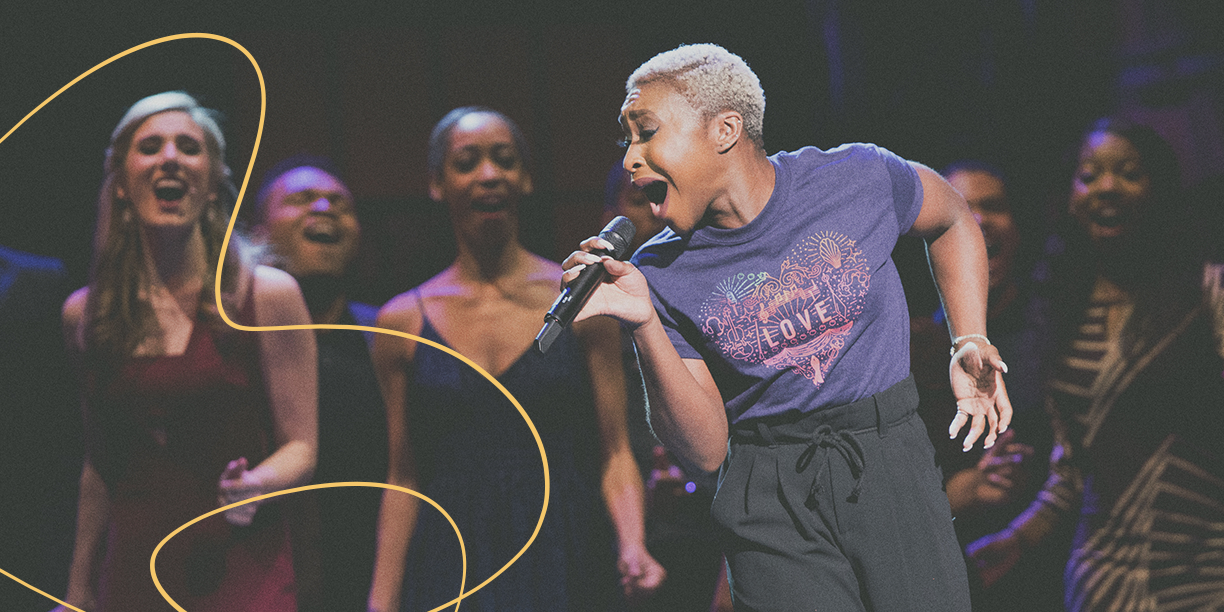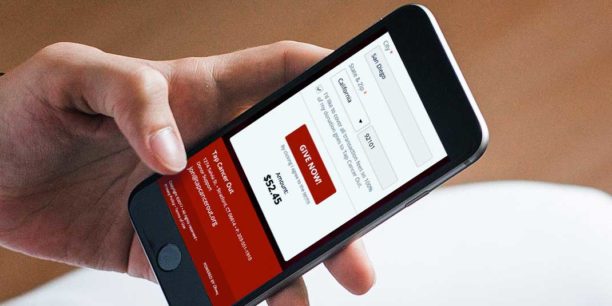6 Fundraising Must-Haves For In-Person Events

After a widespread move to virtual work and experiences, many people and organizations are looking to shift back to in-person events. The pandemic highlighted what people value about physical engagements but also altered what’s important in creating an in-person event experience.
Get Inspiration From Our Nonprofit Event
If your nonprofit is thinking about hosting a live event, our 2022 Fundraising Event Experience Report has you covered. We pinpoint the specific event elements that motivate donors to attend an event in person, even when they have the option to attend virtually.
Below, we’ll summarize six things your attendees want to see at your in-person events, including examples of how Classy Live helps nonprofits bring these events to life. We gathered these top tips directly from a survey of 1,000 fundraising event attendees who shared their preferences and what drove them to attend in-person events personally.
For additional insights, make sure to check out our 2022 Fundraising Event Attendee Insights Report.
1. Easy Registration and Check-In
Your event fundraising success always starts with registration, which can easily be achieved with Classy’s event registration software for nonprofits. Over 92% of both in-person and virtual fundraising event attendees report that they’re likely to donate during the event in addition to any registration costs. That’s why it’s even more important to give them a strong first impression of your giving experience at registration.
To create a more flexible and streamlined event experience, Classy offers a native admin mobile app compatible with Stripe M2 credit card readers. This app enables event coordinators to access and edit attendee information on the go, improving efficiencies during check-in and other attendee interactions.
Offering donors a variety of online payment processing options is another critical piece of the event experience.
In addition to commonly used methods like credit cards, you may want to support donations through PayPal, Venmo, ACH transfers, Apple Pay, or Google Pay. We recently found new data specific to how different payment options influence conversion on a donation site and overall gift size.
Explore The State of Modern Philanthropy 2022 Report
For a successful event, you’ll also want to maintain a simple and streamlined registration form. You can even leverage QR codes at check-in, which have become a common, contactless way to connect with donors and complete registration.
Robust fundraising event software can support you with registration and check-in through features such as:
- Multiple ticket variations and pricing
- Discount codes
- Simple navigation
- Registration tracking
- Self-checkout
2. Feeling Like Part of a Community
In-person attendees want to feel like they belong at your events. They are more likely to say their experience was excellent when they understand their purpose in the big picture and see opportunities to network with other like-minded attendees.
We saw that 91% of fundraising event attendees are likely to take further action with a nonprofit after a successful event experience. Consider how you can foster introductions and engagement between attendees, such as organizing meet-and-greets. Your attendees will feel included, involved, and equipped to break through any social awkwardness.
You want to avoid “robotic” promotions. Your attendees will feel more belonging in your community if your marketing is genuine. Send personalized invitations rather than sponsored social media posts. If your goal is to retain consistent volunteers and donors, go the extra mile to make each supporter feel acknowledged and valued. At the end of the day, this is what will encourage supporters to back your mission and fundraising initiatives.
A fundraising event platform can assist in your community-building efforts through features such as:
- Email and text messaging to share updates
- Native and embedded live-streaming
- Virtual tables, breakout rooms, and networking
- Polls and chat
- Table and seating management
3. Clear Pre-Event Communication
Registration will likely occur months before your event. This means you’ll need to have a pre-event communication plan to keep your event top of mind for attendees.
Your email and social media outreach should ensure attendees have easy access to the information they’ll need on the day of your live event. Avoid attendees needing to search through their inboxes for their tickets or other key information about your event when they show up.
Your pre-event communications will vary slightly depending on your physical event’s size, activities, and requirements, but generally, a high-level pre-event communications plan should include common touchpoints.
Event Communication Touchpoints
- Announce the event: To excite supporters, tease your event before registration opens. Share details of what to expect and let them know you’ll be announcing more soon.
- Open registration: Remind supporters when registration opens, along with any deadlines for registration, including if there are price increases closer to the event.
- Confirm registration: Each supporter who registers for your event should get an email confirming their registration with a receipt, digital tickets, and basic event information.
- One-week follow-up: One week after they register, send a follow-up email with new event details to keep your attendees excited and motivated to invite their friends.
- Event updates, as available: As you confirm speakers, auction items, or other event activities, keep your attendees engaged by sending out updates with that information.
- Week-before email: A week before your event, send a reminder with pertinent information, such as parking, health and safety protocols, tickets, and check-in times.
- Day-of email: On event day, send a reminder saying how excited you are to see your attendees soon. Re-attach their tickets so they’re at the top of their inbox for check-in.
4. Thoughtful Safety Precautions
The 2022 Fundraising Event Experience Report found that two drivers of poor in-person attendee experiences are too many pandemic-related requirements and feeling that organizations did not handle pandemic safety measures correctly.
People have different needs and comfort levels within the changing landscape of the pandemic. It’s important to honor the individual needs of your community, including those who might be immunocompromised and need to continue to practice stricter protocols for their health and safety.
The best way to do this is to offer hybrid events, where attendees can attend in person or from the comfort of their own homes. Hybrid events have many benefits, including increasing overall attendance since people can join even if they’re not local.
Additionally, suppose you need to pivot to completely virtual events due to changing COVID-19 caseloads in your community. In that case, this is much easier to do if you’re already using a hybrid fundraising model.
Some nonprofits have even experienced greater fundraising success by using fundraising event platforms to host hybrid events. This was the case for the nonprofit African Community Education (ACE), which leveraged Classy Live for its 2021 hybrid gala event.
They saw a 203% revenue growth for their 2021 hybrid event compared to their 2020 virtual event. This growth was even larger when comparing their 2021 hybrid event to their last in-person event in 2019.
This is why your nonprofit should offer a virtual fundraising option. While in-person events have many benefits, continuing to raise money virtually will only increase donor awareness and engagement and help you reach your fundraising goals.
5. Value-Added Events That Make an Impact
Events without a clear purpose make it hard for attendees to feel connected to your event. Organize events that provide clear value for your attendees through entertainment, connection, or otherwise.
The 2022 Fundraising Event Experience Report found that the top preferred event types for in-person attendees included:
- Endurance events (43%)
- Performances (38%)
- Auctions (36%)
- Galas (36%)
- Competitions (29%)
From the example above, ACE included music performances, a student fashion show, and keynote speakers in their hybrid fundraising event to provide value for their attendees. Each of these event elements was professionally live–streamed, so everyone could benefit from the entertainment.
The high interest in endurance events, spurred by the pandemic, also increases interest in and enjoyment of outdoor activities. Organizing runs, walks, or even performances outdoors provides an appealing opportunity for your supporters to gather and a clear reason for doing so.
As you organize your future events, you’ll also want to consider how you can tell your nonprofit’s story through the event’s activities to remind attendees of the impact they’re making by showing up. For example, ACE’s music and fashion show showcased the culture of the people the nonprofit serves.
Fundraising event platforms can assist in adding value to and increasing engagement with your events through features such as:
- Live leaderboards and campaign progress
- Auctions, paddle raises, and mobile bidding
- Donation notifications
- Text-to-donate
6. Ability to Duplicate Recurring Events
Admins using Classy’s fundraising event software can save time by duplicating events, simplifying the process of creating year-over-year events or multiple similar events per year. From the Events Dashboard tab, admins can hover over the event they wish to duplicate and click on the “Actions” dropdown. This dropdown will display three options: Edit, Duplicate, and Delete.
By selecting the “Duplicate” option, admins are presented with a new modal that outlines the initial setup of their new duplicated event, including essential information that can be included. After duplicating, admins can further customize or edit the event as needed.
This time-saving benefit is crucial for nonprofits, as it enables them to focus more on planning and executing successful fundraising campaigns rather than getting bogged down in repetitive administrative tasks. Additionally, the ability to easily duplicate events ensures consistency in event setup and execution, leading to a more professional and cohesive experience for both organizers and attendees.
Organize an In-Person Fundraising Event Attendees Will Love
More supporters are feeling comfortable returning to in-person events rather than relying solely on virtual events. By following the data on what in-person event attendees say they enjoy about their event experiences, nonprofits can create opportunities donors are excited to support.
Join us at the 2023 Collaborative for a first-hand look at an in-person event experience built just for nonprofits to grow their fundraising strategies.

Hear Right From 1,000 Fundraising Event Attendees


